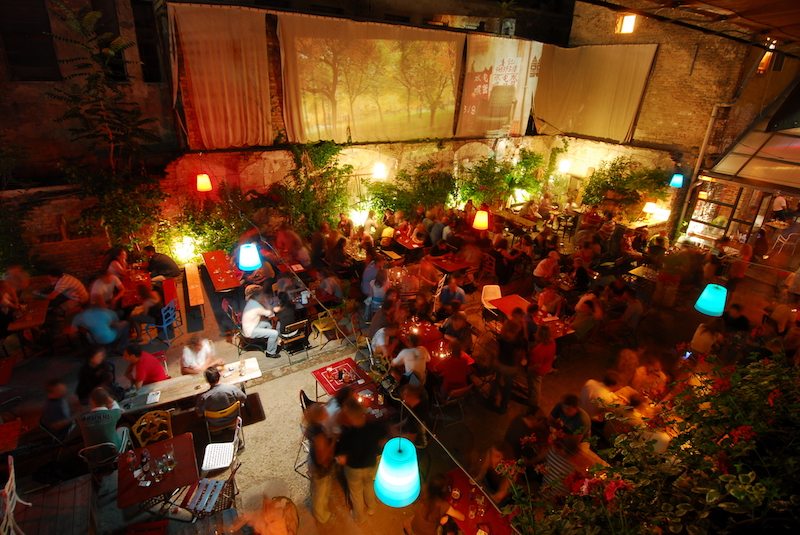
Ruin bars have evolved into a cultural landmark in Budapest, attracting both locals and visitors with their exceptional fusion of history, art, and nightlife. Emerging in the early 2000s with the establishment of Szimpla Kert, these bars are situated in the historic Jewish quarter, District VII, making use of the deserted buildings leftover from World War II. Initially appealing to artists and students, ruin bars have preserved their eclectic allure even as they garnered mainstream attention by 2010.
From the exterior, these bars seem modest, merging effortlessly into the urban scenery without ostentatious signage or loud music. However, entering reveals a lively atmosphere brimming with mismatched furnishings, artistic decor, and an energetic crowd. Each ruin bar possesses its own unique character, yet they all feature common traits: repurposed venues, flea market finds, and a creative, relaxed vibe.
Szimpla Kert continues to be the archetypal ruin bar, presenting a vast space with themed areas, diverse decor, and even a Trabant car for guests to enjoy. Grandio merges a hostel and bar, offering a laid-back ambiance with its tree-filled courtyard. Dürer Kert, located in a former university building, provides a combination of live music and games such as foosball and pétanque.
For those in search of a more club-like setting, the Instant-Fogas Complex occupies an entire apartment building with numerous bars and dance floors. Doboz, although more upscale, is included in ruin bar tours for its distinctive decor and lively dance tunes. Mazel Tov merges community hub and nightlife, serving Jewish cuisine during the day and transforming into a vibrant venue at night.
Csendes Letterem Café & Bar offers a more serene option with its vintage style and relaxed ambiance, perfect for conversation and unwinding. Despite their widespread popularity, ruin bars continue to enchant visitors with their unique charm and cultural importance, making them an essential part of Budapest’s dynamic nightlife.